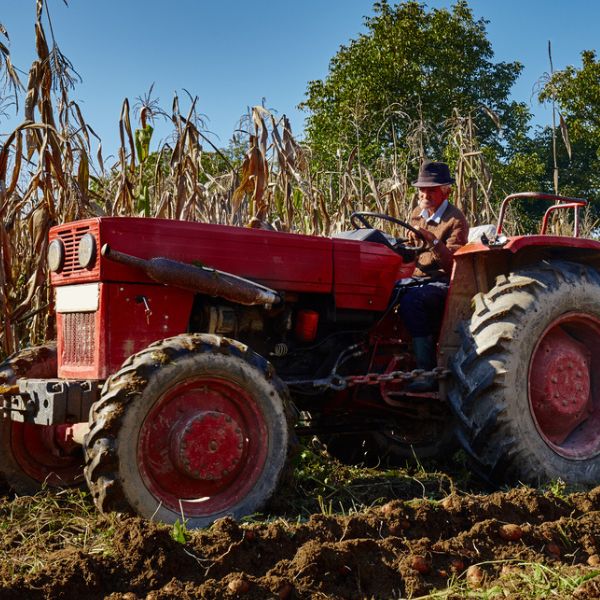Knowing your tractor is overheating is sure to make you sweat. Having your tractor stall in the middle of a field with steam pouring out from under the hood is a frustrating feeling. Fortunately, that experience doesn’t have to happen. Proper preventative maintenance can keep your tractor running at an optimal temperature.
Tractor Cooling System Maintenance Checklist
1) Radiator – The job of the radiator is to store and disperse antifreeze/coolant through the system to release heat produced by the engine. To extend the life of the radiator, it’s important to keep coolant fresh. Over time, radiators can be subject to rusting and developing leaks. Doing a periodic flush and refill of fresh coolant will help keep your radiator in good condition for a longer time. That’s also a good time to inspect for any leaks that may be present.
2) Radiator Hose – The hoses that connect the radiator to the rest of the system are kind of like links in a chain. Everyone knows the old saying that a chain is only as strong as its weakest link. That’s how radiator hoses work. If the hose fails due to a crack or rupture, the entire system fails. It’s important to visually inspect hoses for signs of wear and stress and to make sure the hose clamps are fitting tightly.
3) Water Pump – The water pump acts like a heart in a body in circulating the coolant throughout the system. When the water pump fails to effectively move coolant, overheating in the system occurs. So what can go wrong with a water pump? As seals fail and corrosion occurs, leaks can develop, which leads to overheating in the water pump itself and throughout the cooling system. If you see spotting of coolant on the pavement, inspect the water pump in addition to the radiator and hoses.
4) Thermostat – The thermostat acts as a valve that opens and closes in reaction to temperatures to manage how much coolant flows between the radiator and engine. Thermostats keep engine temperatures in an optimal range, preventing both overheating and excessive heat loss. As thermostats age, they can become less reactive and close shut. When that happens, coolant can’t freely flow between the radiator and engine, causing overheating to occur.
5) Gasket – These essential components are seemingly small players that have a big role in keeping coolant systems functioning. Gaskets seal in fluids and solvents to prevent leaks and contamination. When gaskets become compromised, it reduces the effectiveness of the cooling system to keep temperatures down. As gaskets age, they may become brittle and lose their sealing capacity, If you notice leakage, you’ll want to inspect the gaskets.
Keep your tractor cooling system working
An overheated engine isn’t something you’ll want to deal with in the field. Routinely inspecting and maintaining cooling system components is a wise practice. Doing so will keep you on track for getting work done with less chance of a breakdown at the worst of times.
Return to the Buying Guide main page.

